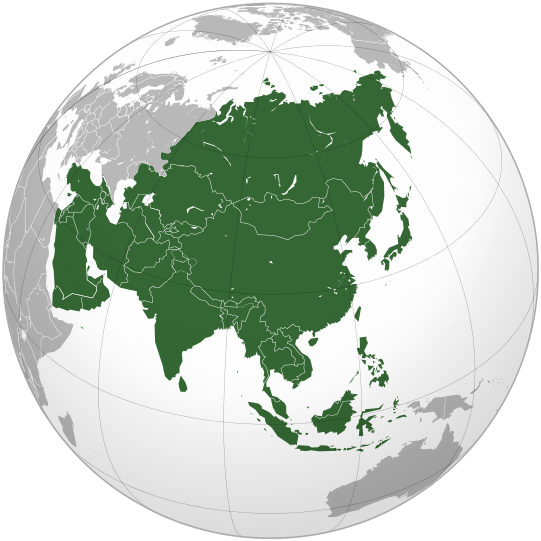Fund Management
EXCLUSIVE GUEST ARTICLE: The Sometimes Overlooked Potential Of Asian Fixed Income

The head of Asian fixed income at AXA Investment Managers gives his views on the region's bond markets.
Asia's equity landscape has been rocky in recent months and wealth managers are paying attention to the fundamentals of the region's fixed income space. Last month, for instance, the UK's Aberdeen Asset Management expanded its fixed income range with two Asian funds, stating that Asia is where growth and savings are being generated and where policymakers are largely on top of events. With developed government bond markets offering modest yields and credit spreads offering limited protection from default risk, the author of this article, Jim Veneau, head of Asian fixed income at AXA Investment Managers, explains why now may be a good time to explore Asian Fixed Income. The editors here are pleased to share this article with readers and invite responses; they do not necessarily endorse all the views expressed from guest contributors.
Between 2002-2015, a number of initiatives have contributed to the development of both the hard and local currency bond markets in Asia. This has helped reduce market barriers, increase diversity of bonds and issuers, improve liquidity, harmonise market practices as well as regulations and promote regional integration of trade services and capital markets.
Corporate credit, as it is priced off the sovereign credit curve, has also benefited from these structural improvements.
Asian economies are extremely divergent in nature. As such, it is not accurate to capture the improvements in Asia without going into detail. However, looking at the sovereign credit rating changes over the last 15 years (see below), summarises to an extent, the results of the ongoing fundamental improvements to Asian fixed income markets.
.jpg)
However, we believe the case for investing in Asian fixed income for the future rests on the long-term improving economic fundamentals of the various countries in the Asian region, some of these are explored below.
The case for Asian growth – five fundamentals:
1. Structural long-term GDP growth – potentially exceeding that of developed markets
Asia is now widely regarded as the manufacturing hub of the world. If the current growth rates in Asia are maintained, the Asian economies together would be expected to dominate global output over the next few decades. Asia’s majority working age population means a healthy consumer base for consumption of the increased output as well, which means less reliance on exports. Good corporate earnings translate into more capital for reinvestment and increase in tax revenues for governments. Together this could lead to additional spending and further fundamental improvements to infrastructure.
2. Large capital reserves – help in meeting external obligations
A centrepiece of the policy framework post the 1997 Asian financial crisis focuses on maintaining a healthy buffer of foreign exchange reserves and smoothing volatility in currencies. Typically foreign exchange reserves provide reassurance of a country’s capacity to meet its external obligations, maintain stable currency valuations and potentially absorb unforeseen external shocks or contingencies. Large capital reserves reduce the risk of another Asian crisis, and also improve the perception about sovereign strength, which should help lower the cost of borrowing over time.
3. Central bank independence – increased transparency and reduced uncertainty for investors
The Asian financial crisis highlighted to governments the importance of central bank independence, inflation policy and flexible exchange rates. The transparency at the majority of the Asian central banks has helped increase credibility and reduces uncertainty for investors.
4. Value add manufacturing hub – a structural beneficiary regardless of commodity cycle
As a mid-end value add manufacturing hub the Asian region is a net raw material importer. As such cheaper energy prices when available act as a tailwind and mean low input costs for manufacturers. Such gains made from lower energy prices may translate into opportunities to reduce oil subsidies and redirect those funds for fiscal funding or help lower inflation, which means higher real income for households.
These factors imply lower costs for the economy as a whole – resulting in higher income and thus better creditworthiness.
5. Increasing Foreign Direct Investments (FDI) – a multiplier effect on the receiving economy
Overall total FDI into Singapore, Indonesia, Malaysia, the Philippines, Thailand and Vietnam surpassed the FDI that flowed into China.
FDI flows have a multiplier effect on the receiving economy and therefore it is expected FDI will lead to the creation of jobs, the sharing of technological advances and increases in efficiency and productive capacity.
The risks
Although a positive picture for Asia readily emerges, investors must be aware of the inherent risks of investing in the region. For example, market capitalisation in Asian markets is lower in comparison to developed markets; issuance, although improving, is therefore relatively smaller and diversification opportunities are somewhat limited, especially for large investors. Asian economies also have less developed financial infrastructure, weaker political systems, less effective legal frameworks for investor protection, and generally lower corporate transparency. Widely recognised as net exporters in the global economy, Asian economic performance could be blunted by extended periods of weak developed market demand, despite the resilience of domestic demand in Asia.
In comparison to developed markets, debt investors in Asia should therefore be prepared for greater volatility, lower liquidity at times of market stress and a China slowdown – given the significant macroeconomic influence it has over the region.
The accuracy of the prevailing return assumptions will be revealed over time. However on the basis of the fundamentals, and the likelihood of Asia becoming part of the mainstream market indices over the coming years, investors should consider monitoring the region closely.
As fixed income investors continue their search for yield and look either beyond familiar markets, down the credit quality ladder or at alternative credit assets, exploring Asian fixed income may also be another valuable asset class to consider.